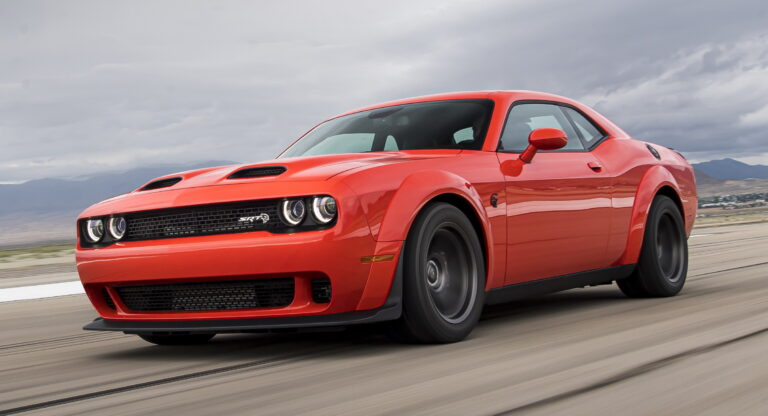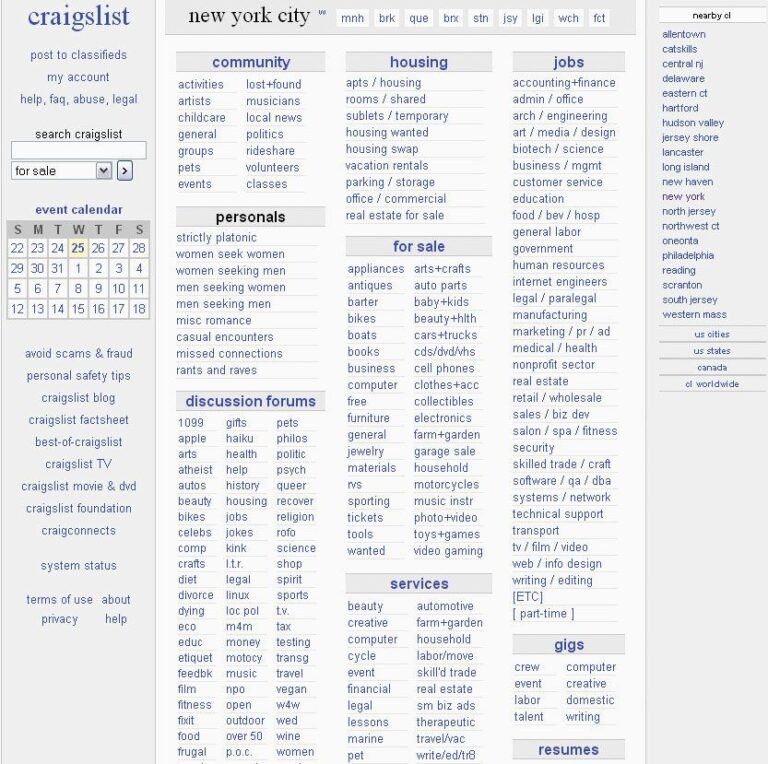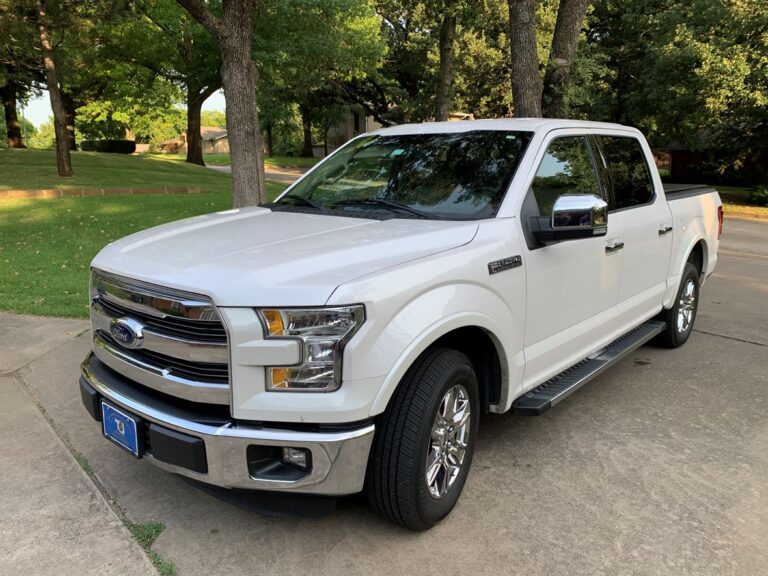Used OTR Tire Trucks For Sale: A Comprehensive Buyer’s Guide
Used OTR Tire Trucks For Sale: A Comprehensive Buyer’s Guide cars.truckstrend.com
The world of heavy machinery is a demanding one, where equipment must withstand immense stress and perform critical tasks with precision. Among these vital machines are Off-The-Road (OTR) tire trucks, specialized vehicles designed to handle and transport the massive tires used on mining trucks, wheel loaders, dozers, and other colossal equipment. These tires, often weighing several tons and standing taller than a human, require dedicated machinery for safe and efficient handling.
For businesses operating in mining, construction, ports, or large-scale agriculture, acquiring an OTR tire truck is not just a convenience—it’s a necessity for operational efficiency and safety. However, new OTR tire trucks represent a significant capital investment. This is where the market for Used OTR Tire Trucks For Sale becomes incredibly relevant, offering a cost-effective and immediate solution for companies seeking to enhance their fleet without breaking the bank. This guide will delve into the intricacies of purchasing used OTR tire trucks, providing insights, practical advice, and essential considerations to ensure a wise investment.
Used OTR Tire Trucks For Sale: A Comprehensive Buyer’s Guide
What Are OTR Tire Trucks and Why Are They Crucial?
OTR tire trucks, often referred to as tire manipulators, tire handlers, or tire cranes, are purpose-built vehicles equipped with specialized boom systems and gripping attachments designed to safely lift, rotate, and position large OTR tires. These trucks are indispensable in environments where heavy equipment operates, as changing or repairing an OTR tire is a complex and dangerous task that cannot be done manually.
Their importance stems from several factors:
- Safety: They eliminate the need for manual handling of extremely heavy and cumbersome tires, significantly reducing the risk of injuries to personnel.
- Efficiency: They drastically cut down the time required for tire changes and maintenance, minimizing equipment downtime and boosting productivity.
- Precision: The hydraulic systems allow for precise positioning of tires onto vehicle hubs or into storage, preventing damage to expensive tires and equipment.
- Mobility: Being truck-mounted, they can travel to various job sites, providing on-site tire service wherever heavy machinery is located.

For companies looking to optimize their operations and maintain a high standard of safety, investing in an OTR tire truck, new or used, is a strategic decision.
Why Consider Used OTR Tire Trucks For Sale?
Opting for Used OTR Tire Trucks For Sale offers a compelling array of benefits, making it an attractive proposition for many businesses:
- Cost-Effectiveness: This is arguably the primary driver. Used trucks come at a significantly lower purchase price than their new counterparts, freeing up capital for other operational needs. This can be particularly beneficial for smaller companies or those expanding their fleet on a budget.
- Immediate Availability: Unlike new trucks, which may have long lead times due to manufacturing and shipping, used trucks are typically available for immediate purchase and deployment, allowing businesses to address urgent operational needs quickly.
- Reduced Depreciation: Heavy equipment, like vehicles, experiences significant depreciation in its first few years. Buying used means much of this initial depreciation has already occurred, leading to a slower rate of value loss post-purchase.
- Proven Performance: A used truck has already been put through its paces, offering a track record of performance. While diligent inspection is still required, its operational history can provide insights into its reliability.
- Environmental Impact: Purchasing used equipment is a form of recycling, extending the lifespan of existing machinery and reducing the demand for new manufacturing, which contributes to a more sustainable operational model.
- Access to Premium Models: A budget that might only stretch to a basic new model could potentially afford a higher-spec, more robust, or feature-rich used OTR tire truck from a premium manufacturer.
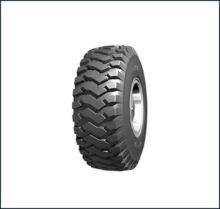
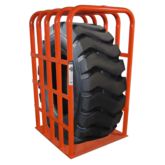
Key Factors When Buying Used OTR Tire Trucks For Sale
The decision to purchase Used OTR Tire Trucks For Sale requires careful consideration and thorough due diligence. Here are the critical factors to evaluate:
-
Overall Condition Assessment:
- Visual Inspection: Look for signs of major rust, structural damage, significant dents, or poor repairs on the chassis, boom, and outriggers.
- Fluid Leaks: Check for oil, hydraulic fluid, or coolant leaks around the engine, transmission, and hydraulic lines.
- Tires: Assess the condition and wear of the truck’s own tires.
- Cab Interior: Check for wear and tear, functionality of controls, gauges, and air conditioning.
-
Maintenance History and Records: This is paramount. Request comprehensive service records. Look for evidence of regular maintenance, oil changes, hydraulic system checks, and any major repairs. A well-documented history indicates a well-cared-for machine.
-
Engine and Transmission:
- Start-Up: Listen for unusual noises, excessive smoke, or difficulty starting.
- Performance: During a test drive (if possible), check for smooth shifting, adequate power, and unusual vibrations.
- Fluid Levels: Verify fluid levels and check for contamination.
-
Hydraulic System (Boom and Gripper): This is the heart of an OTR tire truck.
- Boom Operation: Test the full range of motion. Look for smooth, consistent movement without jerking or hesitation.
- Cylinders and Hoses: Inspect for leaks, damage, or wear.
- Gripper Functionality: Ensure the gripper opens, closes, and rotates smoothly and securely. Check the condition of the gripper pads.
- Pump Noise: Listen for excessive whining or grinding from the hydraulic pump.
-
Chassis and Frame Integrity: Given the heavy loads these trucks carry, the chassis must be robust. Inspect for cracks, bends, or signs of stress, especially around mounting points for the boom and outriggers.
-
Mileage and Engine Hours: While not always a direct indicator of wear, lower mileage/hours generally means less overall wear and tear. However, a well-maintained high-hour truck can still be a better investment than a neglected low-hour one.
-
Brand Reputation and Parts Availability: Stick to reputable manufacturers known for durability and good aftermarket support (e.g., Stellar, Iowa Mold Tooling (IMT), Maintainer, Kenworth, Peterbilt, Freightliner chassis). Ensure spare parts for both the truck chassis and the tire handling equipment are readily available.
Types of Used OTR Tire Trucks For Sale
When exploring Used OTR Tire Trucks For Sale, you’ll encounter various configurations, primarily differentiated by their tire handling mechanism and chassis type:
- Boom Trucks with Tire Handlers: These are the most common. A standard truck chassis is fitted with a telescopic or knuckle boom crane, to which a specialized tire gripper attachment is mounted. The boom provides reach and lift, while the gripper secures and manipulates the tire. They vary significantly in lift capacity and reach.
- Dedicated Tire Manipulators/Handlers: Some units are built from the ground up as specialized tire handlers, often on a robust custom chassis. These are designed purely for tire handling, offering superior stability and precision for the largest OTR tires, but may be less versatile for other tasks.
- Capacity Variations: OTR tire trucks are rated by their lifting capacity. This is a critical specification, as OTR tires can range from a few hundred pounds to over 20,000 pounds (9,000 kg). Ensure the truck’s capacity meets or exceeds the weight of the largest tires you intend to handle.
Where to Find Used OTR Tire Trucks For Sale
The market for Used OTR Tire Trucks For Sale is diverse, offering several avenues for potential buyers:
- Specialized Heavy Equipment Dealerships: Many dealerships specialize in used construction, mining, and industrial equipment. They often offer certified used trucks, sometimes with limited warranties, and can assist with financing and transportation.
- Online Marketplaces: Websites like EquipmentTrader, MachineryTrader, Ritchie Bros. Auctioneers (used equipment listings), IronPlanet, and similar platforms feature extensive listings from dealers and private sellers worldwide.
- Auctions: Heavy equipment auctions (both live and online) can be excellent places to find deals, but they require a quick decision-making process and often involve buying "as-is," making pre-inspection even more crucial.
- Private Sellers: Sometimes, companies upgrading their fleet will sell their older OTR tire trucks directly. While potentially offering lower prices, private sales typically come with fewer guarantees and require the buyer to handle all logistics.
- Manufacturer Websites: Some OTR tire truck manufacturers might have a "used equipment" section on their websites, listing trade-ins or certified pre-owned units.
The Buying Process: A Step-by-Step Guide
Navigating the purchase of Used OTR Tire Trucks For Sale can be simplified by following a structured approach:
-
Define Your Needs:
- What is the maximum weight and diameter of the tires you will handle?
- What is the required reach and lift height?
- What terrain will the truck operate on (e.g., paved roads, rough mine sites)?
- What is your budget range?
-
Research and Shortlist: Based on your needs, research available models and create a shortlist of potential trucks from various sellers. Compare specifications, features, and reported condition.
-
Thorough Inspection:
- In-Person Inspection: Always inspect the truck in person if possible. Bring a qualified mechanic or technician experienced with heavy equipment.
- Pre-Purchase Inspection (PPI): If an in-person visit isn’t feasible, hire a third-party inspection service. They can provide a detailed report, photos, and even videos.
- Test All Functions: Operate the engine, transmission, boom, gripper, outriggers, and all controls. Load a tire if possible to test under working conditions.
-
Review Documentation: Scrutinize maintenance records, service history, title, and any lien information. Verify the VIN and engine serial numbers match the documentation.
-
Negotiation: Armed with your inspection findings, negotiate the price. Be prepared to walk away if the price doesn’t align with the truck’s condition and your budget.
-
Financing and Payment: Secure financing if needed. Understand the payment terms and ensure all financial arrangements are clear before proceeding.
-
Paperwork and Transfer of Ownership: Complete all necessary purchase agreements, bills of sale, and title transfer documents. Ensure proper registration and licensing for the truck.
-
Transportation and Delivery: Arrange for the safe and legal transportation of the OTR tire truck to your facility. This often requires specialized heavy haulage services.
Common Challenges and Solutions
While buying Used OTR Tire Trucks For Sale offers advantages, it also comes with potential pitfalls:
- Hidden Mechanical Issues:
- Solution: Thorough pre-purchase inspection by a qualified mechanic, review of detailed service records. Consider fluid analysis for engine and hydraulic systems.
- Lack of Clear History:
- Solution: Prioritize sellers who can provide comprehensive maintenance logs. If history is sparse, factor in a higher contingency for potential repairs.
- Transportation Logistics: OTR tire trucks are large and heavy.
- Solution: Factor transportation costs and specialized permits into your budget. Work with reputable heavy haul transport companies.
- Financing for Used Equipment: Some lenders might be more hesitant to finance older or high-hour equipment.
- Solution: Explore various financing options, including equipment loans, lines of credit, or lease-to-own programs tailored for used machinery. Be prepared with a solid business plan.
- Specialized Maintenance and Parts:
- Solution: Research parts availability for the specific make and model before buying. Establish relationships with mechanics experienced in hydraulic systems and heavy equipment.
Maximizing Your Investment in Used OTR Tire Trucks
Once you’ve purchased your Used OTR Tire Trucks For Sale, maximizing its lifespan and efficiency requires ongoing commitment:
- Implement a Strict Maintenance Schedule: Follow manufacturer-recommended service intervals for engine, transmission, and especially the hydraulic system. Regular fluid changes, filter replacements, and lubrication are critical.
- Operator Training: Ensure your operators are fully trained on the specific model of OTR tire truck. Proper operation minimizes wear and tear and enhances safety.
- Regular Inspections: Daily pre-shift inspections by operators and more detailed weekly/monthly inspections by mechanics can catch minor issues before they become major, costly problems.
- Proactive Repairs: Address any minor leaks, unusual noises, or performance issues immediately. Delaying repairs often leads to more extensive damage and higher costs down the line.
- Maintain Records: Keep meticulous records of all maintenance, repairs, and inspections. This helps track performance, identify recurring issues, and will be invaluable if you decide to sell the truck in the future.
Table: Factors Influencing Used OTR Tire Truck Prices & Example Ranges
It is important to note that specific prices for Used OTR Tire Trucks For Sale vary drastically based on numerous factors. The table below provides an illustrative overview of these factors and typical example price ranges in USD, rather than definitive prices. Actual prices can be higher or lower depending on market conditions, seller, and location.
| Factor | Description | Impact on Price | Typical Price Range (USD – Example) |
|---|---|---|---|
| Age & Hours/Mileage | Newer models with fewer hours/miles. | Higher. Indicates less wear and more remaining useful life. | $150,000 – $400,000+ (Newer, low-hour, high-capacity models) |
| Older models with high hours/miles. | Lower. Indicates significant use, potential for more immediate maintenance. | $40,000 – $150,000 (Older, high-hour, mid-capacity models) | |
| Condition | Excellent (well-maintained, minimal wear, ready to work). | Significantly higher. Minimal immediate repairs needed. | At the higher end of its age/spec bracket. |
| Fair (operational, but shows wear, needs some repairs/maintenance). | Moderate. Requires upfront investment for repairs. | Mid-range for its age/spec bracket. | |
| Poor (significant issues, non-operational, needs major overhaul). | Lowest. Often bought for parts or extensive rebuilding. | $15,000 – $40,000 (May not include transport) | |
| Brand & Reputation | Reputable brands (Stellar, IMT, Maintainer, Freightliner, Kenworth chassis). | Higher. Known for reliability, parts availability, better resale value. | Premium pricing for their category. |
| Less common or older brands. | Lower. Potential challenges with parts or specialized service. | More budget-friendly, but buyer beware. | |
| Lift Capacity | Higher lift capacity (e.g., 20,000 lbs+). | Higher. Capable of handling the largest OTR tires. | $100,000 – $400,000+ (Often correlates with overall size and robustness) |
| Lower lift capacity (e.g., under 10,000 lbs). | Lower. Suitable for smaller OTR tires or industrial tires. | $40,000 – $100,000 (Often on lighter duty truck chassis) | |
| Features & Attachments | Specialized attachments (e.g., tire dollies, specific gripper types), advanced controls, extended reach. | Higher. Adds versatility and efficiency. | Can add $10,000 – $50,000+ to the base price. |
| Maintenance History | Comprehensive, well-documented service records. | Higher. Indicates responsible ownership and potentially fewer hidden issues. | Can justify a premium of 5-15% over similar trucks with poor records. |
| Location & Transport | Proximity to buyer, ease of transport. | Indirectly impacts final cost. Transport costs can be substantial for heavy equipment. | Transport can add $1,000 – $10,000+ depending on distance and size. |
Note: These ranges are illustrative and highly variable. Always seek specific quotes and conduct thorough inspections.
Frequently Asked Questions (FAQ) about Used OTR Tire Trucks For Sale
Q1: What is the average lifespan of a used OTR tire truck?
A1: With proper maintenance, an OTR tire truck can last 15-25 years or more, often exceeding 10,000-20,000 engine hours. The lifespan depends heavily on the initial quality, maintenance history, and operational conditions.
Q2: Are spare parts readily available for older used models?
A2: For major brands like Stellar, IMT, and trucks built on common chassis (e.g., Freightliner, Kenworth), parts are generally available. However, for very old or obscure models, parts availability can be a challenge. Always verify this before purchasing.
Q3: Can I get financing for a used OTR tire truck?
A3: Yes, many equipment lenders specialize in financing used heavy machinery. Your eligibility will depend on your creditworthiness, the truck’s age and condition, and your business’s financial health.
Q4: How important is the pre-purchase inspection (PPI)?
A4: Extremely important. A PPI by an independent, qualified mechanic can uncover hidden issues, assess the true condition, and provide leverage for price negotiation, potentially saving you thousands in future repairs.
Q5: What are the typical transportation costs for a used OTR tire truck?
A5: Transportation costs vary widely based on distance, the truck’s size and weight, and current fuel prices. It can range from a few hundred dollars for local transport to several thousand for cross-country or international shipping. Always get a detailed quote.
Q6: What is the difference between a boom truck with a tire handler and a dedicated tire manipulator?
A6: A boom truck with a tire handler is a standard truck chassis with a crane and a tire gripping attachment, offering some versatility. A dedicated tire manipulator is purpose-built for tire handling, often on a custom, heavier-duty chassis, providing superior stability and precision for the largest tires, but less versatility for other tasks.
Conclusion
The market for Used OTR Tire Trucks For Sale presents a compelling opportunity for businesses to acquire essential heavy equipment at a fraction of the cost of new units. While the allure of cost savings is strong, a successful purchase hinges on meticulous research, thorough inspection, and a clear understanding of your operational needs. By following the guidance outlined in this article – from understanding the types of trucks available and where to find them, to navigating the buying process and addressing potential challenges – you can make an informed decision that enhances your operational efficiency, improves safety, and provides significant value for your investment. Remember, a well-chosen used OTR tire truck isn’t just a piece of equipment; it’s a strategic asset that can drive productivity and profitability for years to come.

